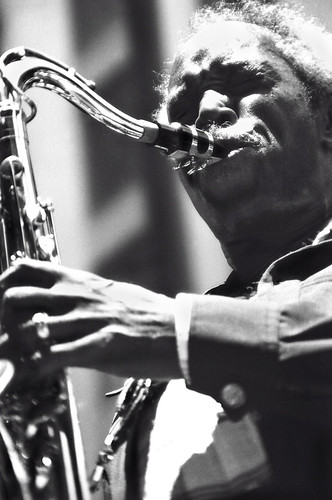 What do you get when you cross a science nerd with a jazz saxophonist? Apparently, a researcher with enough curiosity, talent and intelligence to actually video, in real time, the brain functions of people at their most creative.
What do you get when you cross a science nerd with a jazz saxophonist? Apparently, a researcher with enough curiosity, talent and intelligence to actually video, in real time, the brain functions of people at their most creative.
Using advanced MRI scans, Charles J. Limb, M.D., and his pals at Johns Hopkins University, have recently taken some pretty interesting pictures of the human brain during intense periods of creativity. Their mission: To measure the difference between a brain in a normal state and one rocking out during a creative jam session.
In a report published recently in Public Library of Science ONE, the scientists say they are interested in what’s going on in the brain during the “almost trance-like state jazz artists enter during spontaneous improvisation.”
“When Jazz musicians improvise, they often play with eyes closed in a distinctive, personal style that transcends traditional rules of melody and rhythm,” said Limb, who is also a trained Jazz Saxophonist.
“It’s a remarkable frame of mind during which, all of a sudden, the musician is generating music that has never been heard, thought, practiced or played before. What comes out is completely spontaneous.”
So, being both a cool musician and a geeky researcher, Limb had access to all the fancy gizmos necessary to accurately compare the brain activity of a person playing a memorized scale of notes, for example, to the brain activity of that same person in the creative flow of an improvised blues melody complimenting a jazz quartet.
What they found was pretty interesting.
While improvising, the parts of the musician’s brain responsible for tasks like self-censoring showed a sharp decrease in activity, while activity in the area responsible for self-expression increased.
“Jazz is often described as being an extremely individualistic art form. You can figure out which jazz musician is playing because one person’s improvisation sounds only like him or her,” says Limb. “What we think is happening is when you’re telling your own musical story, your shutting down impulses that might impede the flow of ideas.”
I know what you’re thinking. That’s all well and good for brain geeks and super talented musicians. But what’s that got to do with me? Lets bring this out of the lab and into the real world for a minute. As parents, teachers and organizational leaders, what can we take away from all this? In other words, when we need creative solutions, what can we do to encourage it?
I’ve got two words for you: Creative Environment.
The area of the brain that shuts down during the highest levels of creativity is responsible for “self-censoring” which is just another way of saying “inhibitions.” Clearly, if we want to be creative, we have to encourage a frame of mind that won’t hold back. No fear. So the first order of business should be to nurture a safe environment. If we want people to be creative, they have to feel comfortable taking risks.
The next thing to consider is the area of the brain that fires up during creative bursts. Remember, this part of the brain is linked to “self-expression,” and helps with activities requiring a personal touch (tasks that relate individuality) such as telling a story about oneself. You can encourage creativity then, by giving a person the freedom to find and express a solution in her own unique way.
When it comes to spontaneous creativity and quick thinking, clearly our brains have very little use for fear, but plenty of use for the uniqueness of personality. If you value creativity, and are interested in supporting it, you must nurture an environment rich in two basic freedoms: freedom of expression and freedom to fail.
Image Credit: ![]() Tom Marcello
Tom Marcello

